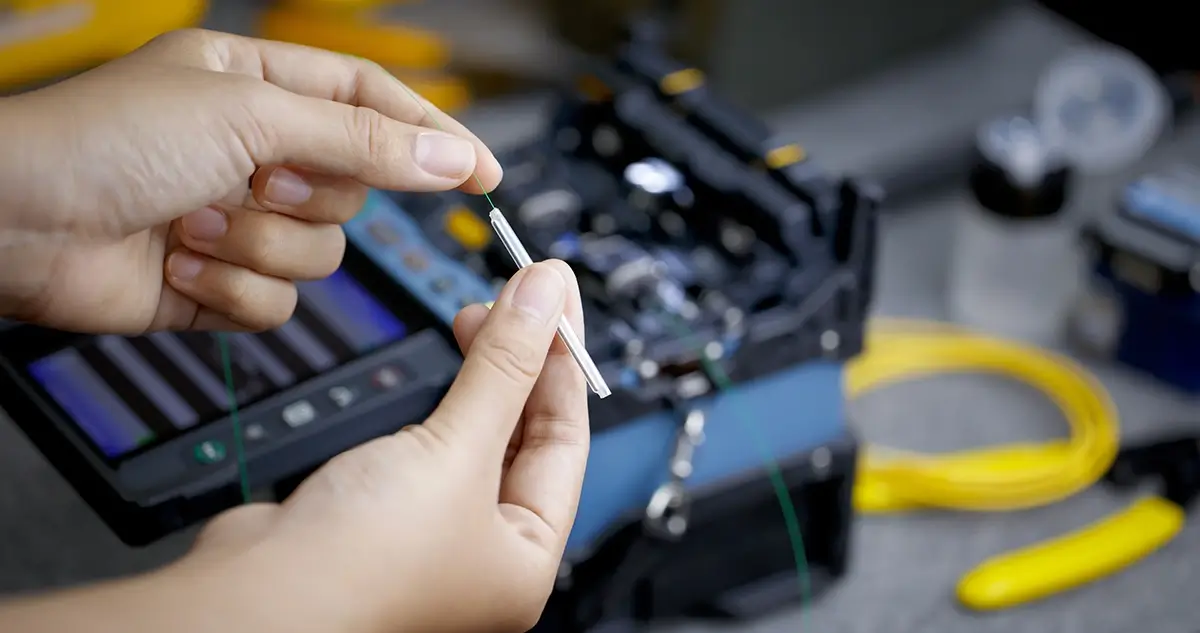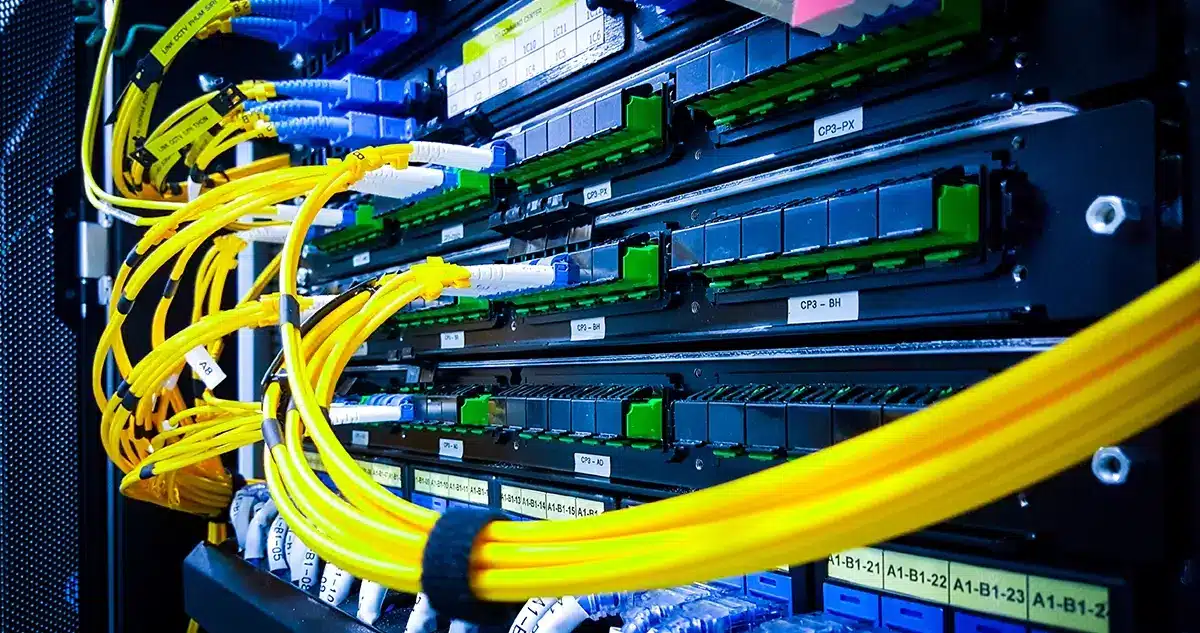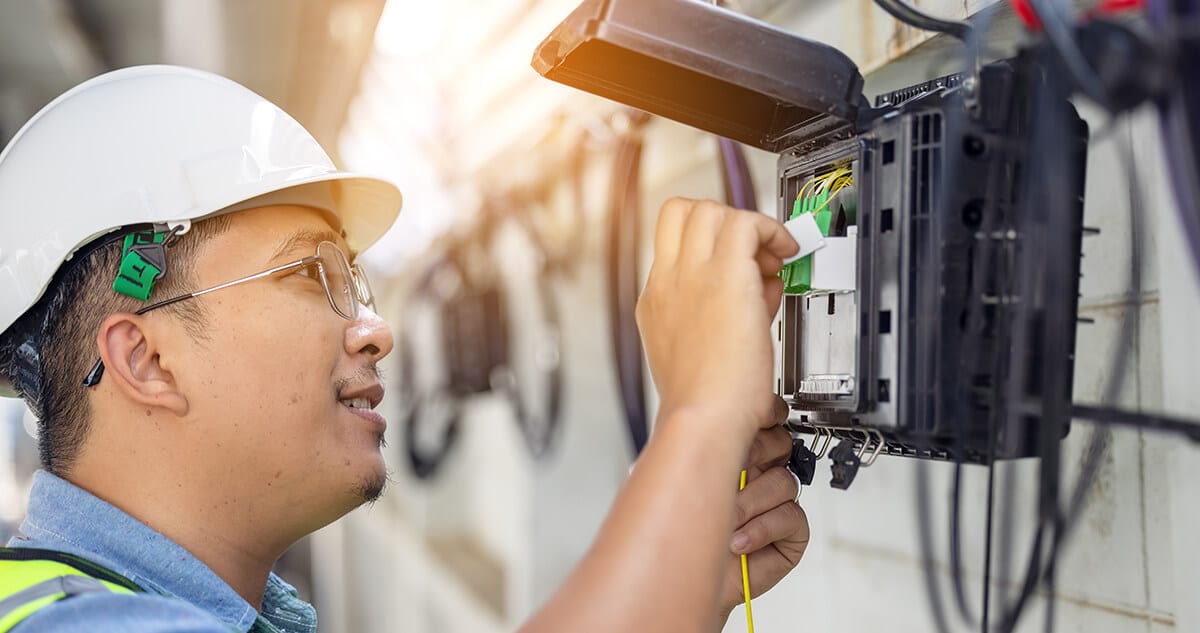Copper cables have been widely used for data communications because copper is an excellent conductor. Copper cabling for infrastructure wiring has been used widely, but now these systems are showing their limits. A transition to a fiber-based infrastructure will provide you with virtually no limits for higher demands from multiple users in all environments. At Rivas TechGroup, we partner with IFP Connect to offer clients a complete fiber solution. We know fiber cabling is a new concept for many people, so we’ve created this guide to help you better understand the benefits of the transition from copper to fiber.
Low Attenuation
Attenuation (measured in decibels or dB) describes the signal strength loss in networking cables. Copper wire is a really good conductor, but it isn’t perfect, and the resulting resistance causes a signal traveling down the wire to degrade over distance. This effect can add up to a substantial loss for longer distances. Fiber optic cables don’t suffer from the same sources of attenuation, but scattering, absorption, or bending can also cause their signals to degrade over time and distance. In the case of fiber optics, typical attenuation will not exceed 1.5dB/km, while copper wire can drop as much as 20dB/km. Decibels may not be a familiar unit to everyone, but you can rest assured that 1.5dB/km is much better!

More Bandwidth
Bandwidth is the maximum amount of data that can be transmitted over a connection in a given amount of time. The defining characteristic of bandwidth is the range of radio frequencies available to use to transmit data (the width of the radio band, a.k.a. “bandwidth”). In copper wiring, 500 MHz of bandwidth can be used at distances up to 100 meters before significant degradation occurs. Fiber optic links, on the other hand, can use the same bandwidth over as much as a kilometer or can operate at even higher bandwidths (e.g., 1GHz) for somewhat shorter distances (e.g., 500 meters). These capabilities allow fiber optic links to claim that they provide 1,000 times as much bandwidth as copper, according to Netceed.
Handling Parameters
Fiber optic cabling is not only lightweight with a thin diameter, but it also has substantial pulling strength. Fiber cable weighs about 30% less than copper, making long runs and pulls easier and faster. Copper wire has a thick plastic coating around it that can get heavy and hard to manage as distance increases. Fiber optic cables have a polymer jacket and Kevlar around a thin glass strand. The polymer is helpful for long, twisting pulls while the Kevlar protects the glass.
Nonconductive Solution
Fiber cables are nonconductive and can run near power. The same doesn’t stand true for copper wire. As an electrical conductor, copper metal can pick up noise from nearby electric devices through electromagnetic radiation or crosstalk. Fiber optic cables are not subject to the same electromagnetic interference because fiber uses only light to transmit data, making it the best solution for connecting buildings or within high-rise buildings that require a shared network between floors.

Transmission Speed and Distance
Elliott Electric Supply Company says that because attenuation, signal interference, and signal distortion issues increase with longer copper cable lengths, copper cable networks are not typically used across wide ranges, such as multiple floors of an office building. The standard maximum length for copper cables is 100 meters (328 feet), and for fiber optic cables is 100 kilometers (62.14 miles).
No Corrosion
Have you seen a green, grimy penny? That is the aftermath and effect that oxygen has on the copper element. The same can happen to copper wire. Over time, copper is in significant danger of corrosion, with no way to avoid the inevitable. Corroded copper becomes less conductive and can degrade to the point where there are breaks in the physical wire, preventing signal transmission. However, the “conductor” in fiber optic cable will not corrode because it is glass, not metal. In fact, fiber optic cable has become the backbone of educational campuses, corporate and retail buildings, and data centers because of its longevity. Fiber’s resistance to corrosion has made it the ideal choice for coastal properties and infrastructure regularly affected by weather.
Fiber optic cabling brings many advantages, such as lower attenuation, increased bandwidth, superior longevity, and higher speeds. Whether you’re looking to upgrade your existing cabling or invest in fiber optic cabling for your new build, we are ready to help. Contact our team at Rivas TechGroup for more information on your complete fiber solution!

